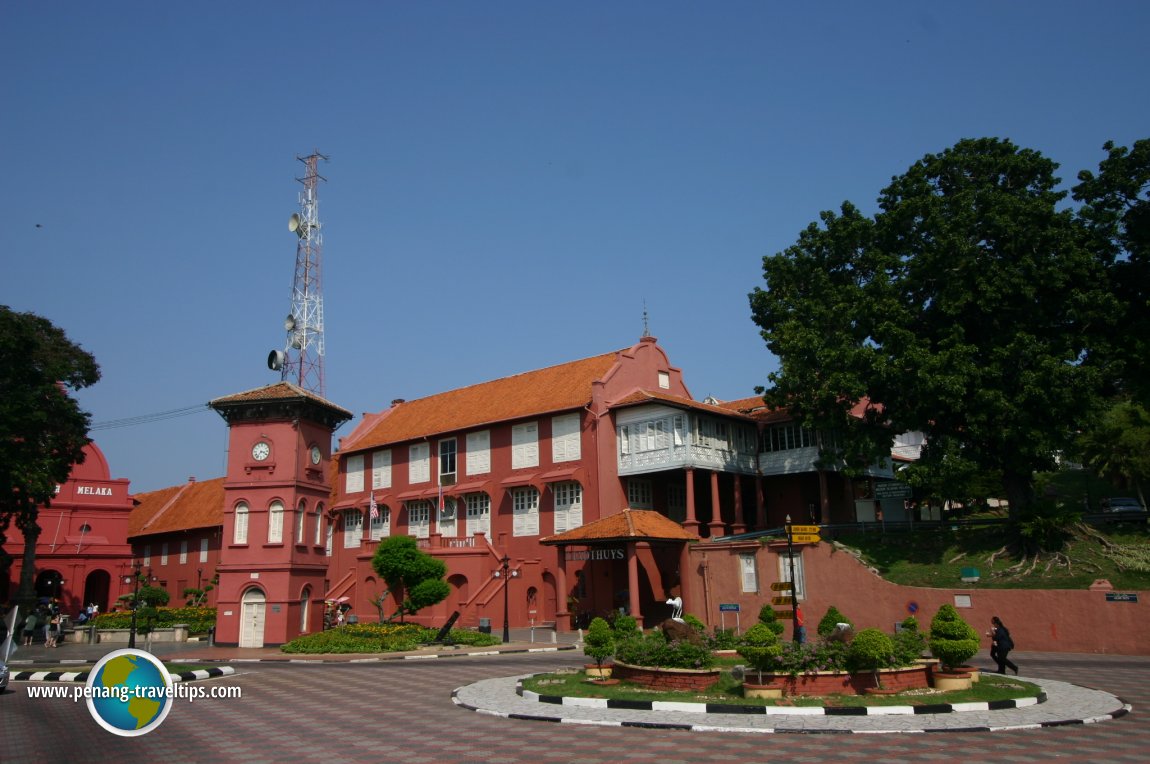 Malacca Town (9 July, 2005)
Malacca Town (9 July, 2005)
Malacca Town (GPS: 2.19429, 102.24869), or Bandar Melaka, is the main city and capital of Malacca State. It is often known nowadays as Melaka Bandaraya Bersejarah or the Historic City of Malacca. Malacca Town is located near the coast of the Straits of Malacca, approximately at the centre of Malacca State. The city is bisected by the meandering Malacca River, a historical waterway that provided the lifeblood to the early settlement. Today it is a city of close to half a million people (2009 estimation) and covers an area of over 300 square kilometers. It was granted city status in 2003. The mayor or Dato' Bandar of the city is Yusof Jantan.
In Malacca Town today, we are constantly reminded of its glorious past. The tangible heritage sites in Malacca Town are reminders of what the various colonial powers have carved for themselves. Porta de Santiago, St Paul's Church, Stadthuys, Cheng Hoon Teng Temple, are the handiwork of people who came to Malacca after the fall of the sultanate.
Unfortunately nothing from the Sultanate era remains, and the Palace of the Malacca Sultan that we see today is just a replica based on sketchy documentation. The legacy of the Malays, which is no less significant, if often overlooked. Not that it is of lesser importance, but because between 1511 to 1957, the power in Malacca was in colonial hands. Still, if we view Malacca in the Malaysian context, we will appreciate its role in giving birth to the Malay people that we know today.
Malacca Town developed from the original settlement founded by Parameswara in 1400 AD (or according to historical calculations, 1396 AD). The city is older than the Malay civilization itself. What I mean by that is that, when Malacca was founded, the very word for "Malay" has not even existed. The Malays themselves in the late 14th century were not as we know them today; the majority were animist. If they were to practise any religion, it was more likely Hinduism mixed with local pagan adherences. However, Islam had already made inroads in the Malay peninsula as well as in neighbouring Sumatra and Java. Also, the religion had spread via land routes to China long before it arrived in Malacca.
Until Parameswara arrived in Malacca, there were only pockets of minor rulers along the peninsula, in places such as Temasek and Kedah, but none approaching the magnitude of neighbouring states such as Majapahit in Java, Srivijaya in Sumatra, Ayutthaya in Siam or Angkor in Khmer. The lifespan of the Malacca Sultanate is also comparatively brief, lasting a mere 111 years, from 1400 to 1511, when the Portuguese put an end to it. Nevertheless Parameswara's dynasty continued after the fall of Malacca in the form of the Johor Empire and the Sultanate of Perak.
The Malacca dynasty in Johor ended in the murder of Sultan Mahmud Shah II in 1699, after which the throne went to the Bendahara's line until 1877, when it went to the Temenggong's line, which is still the present dynasty. I describe more about it in the History of Johor and Kota Tinggi. In Perak, the dynasty founded by Sultan Muzaffar Shah, the son of Sultan Mahmud Shah of Malacca, is still ruling the state, making it one of the oldest hereditary seats, and the second oldest sultanate after Kedah.
Malacca Town is  on the Map of Towns in Malacca
on the Map of Towns in Malacca
Discover Malacca; list of Towns in Malacca and Towns in Malaysia
 Map of Roads in Malacca
Map of Roads in Malacca
 Latest updates on Penang Travel Tips
Latest updates on Penang Travel Tips

Copyright © 2003-2025 Timothy Tye. All Rights Reserved.

 Go Back
Go Back